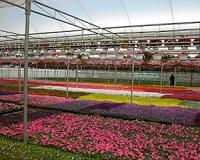 |
Western Cape, South Africa (SPX) Mar 21, 2011 The common fig is a subtropical, deciduous fruit tree grown in most Mediterranean-type climates. Although some believe that figs may be the oldest cultivated fruit species on earth, global expansion of fig crops has been hindered by the narrow research base pertaining to production practices and the limited number of fig cultivars currently available. Recently, three black figs were established in the Mediterranean-type climate of Western Cape Province of South Africa to provide fruit for fresh markets throughout South Africa and Europe. Hein J. Gerber, Willem J. Steyn, and Karen I. Theron from the Department of Horticultural Science at South Africa's University of Stellenbosch reported on a study they conducted on three fig cultivars in HortScience. The research, conducted as part of Gerber's MScAgric degree requirements, was developed to establish the optimum 1-year-old shoot length to maximize fig fruit yield and quality. "To maximize yield of good-quality fruit, the most productive shoot lengths (in terms of yield and fruit size) should be determined and strategies devised to maximize the number of these shoots on trees on an annual basis. It is important to study the phenological characteristics of a cultivar to establish optimum shoot characteristics", said Theron, corresponding author of the study. "The objective of our research was to identify the most suitable types of shoots and complete a detailed, comparative study of processes such as budbreak, shoot growth, and yield for each shoot length category." For the study, the number of fruit, budbreak, and shoot growth on one-year-old shoots in four length categories were evaluated for 'Bourjasotte Noire', 'Col de Damme Noire', and 'Noire de Caromb' fig cultivars ('Bourjasotte Noire': 10-15, 25-40, 50-65, and 75+ cm; 'Col de Damme Noire' and 'Noire de Caromb': 10-20, 30-50, 60-80, and 100+ cm). Results showed that for 'Bourjasotte Noire', all four categories were suited for reproduction in the current season and provided sufficient new shoot growth to ensure a fair yield the next season. For 'Col de Damme Noire', one category (category four) showed the best 1-year-old shoot length for reproduction, both in terms of fruit number and fruit size, but the researchers cautioned that "yield on these shoots may not be optimal the next season, because current-season shoots are too short. This cultivar will require pruning to stimulate strong new shoot growth that will ensure regular, high yields", they said. In 'Noire de Caromb', category one shoots proved very productive relative to their length. Theron noted that the results will allow researchers to develop effective pruning strategies to ensure a balance between current-season yield and the development of new fruiting wood that will guarantee regular, high yields. The findings also suggest that the three cultivars will require "differential application" of horticultural practices to attain regular, high yields of large fruit. The researchers concluded that although not all fig cultivars bear fruit on the same shoot types, it appears as if a wide range of shoot lengths is productive.
Share This Article With Planet Earth
Related Links American Society for Horticultural Science Farming Today - Suppliers and Technology
 New Software Calculates Heating Costs In Greenhouse Operations
New Software Calculates Heating Costs In Greenhouse OperationsToledo OH (SPX) Mar 21, 2011 In parts of the United States where ornamental and vegetable plants are produced in greenhouses during cold seasons, heating costs are second only to labor costs for greenhouse operators. Greenhouse growers are faced with important management decisions that rely on understanding how temperature settings, heating systems, fuel types, and construction decisions influence their heating costs. ... read more |
|
| The content herein, unless otherwise known to be public domain, are Copyright 1995-2010 - SpaceDaily. AFP and UPI Wire Stories are copyright Agence France-Presse and United Press International. ESA Portal Reports are copyright European Space Agency. All NASA sourced material is public domain. Additional copyrights may apply in whole or part to other bona fide parties. Advertising does not imply endorsement,agreement or approval of any opinions, statements or information provided by SpaceDaily on any Web page published or hosted by SpaceDaily. Privacy Statement |